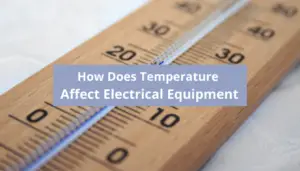Electric motors are crucial components in various applications, powering everything from industrial machinery to household appliances.
However, they can experience power loss, which can lead to reduced performance and operational inefficiencies.
Understanding the potential causes of power loss is essential for troubleshooting and maintaining electric motors.
Power loss can occur due to various factors such as inefficiencies in the motor or electrical system, mechanical issues, inadequate power supply, or external factors that impede proper operation.
In this article, we will explore the common factors that contribute to power loss in electric motors, offering insights and tips for diagnosing and resolving these issues.
Table of Contents
What does power loss mean in electric motors?
Power loss refers to a reduction in the electrical power output or performance of an electric motor or any other electrical device.
It signifies a decrease in the amount of power that the device can deliver or utilize to perform its intended function.
The result of power loss is typically diminished motor performance, reduced torque or speed, increased energy consumption, or even motor failure.
1. Overheating: A Silent Culprit
Overheating is a significant factor that can cause power loss in electric motors. Excessive heat can damage the motor windings, leading to insulation breakdown and reduced power output.
Heat buildup can be caused by prolonged operation, inadequate cooling, or high ambient temperatures.
It is crucial to ensure proper ventilation, adequate cooling systems, and regular maintenance to prevent overheating and preserve optimal motor performance.
Read also my article: Motor Temperature Rise (Causes and Limits).
2. Electrical Supply Issues: The Power Source Matters
Problems with the electrical supply can directly impact motor performance. Low voltage, voltage fluctuations, or unbalanced phases can result in reduced power delivery to the motor.
This can manifest as decreased torque, slower rotation, or even motor stalling. It is essential to monitor the electrical supply, address any issues promptly, and consult with an electrician or power specialist if necessary to ensure a stable and appropriate power source for the motor.
3. Mechanical Wear and Tear: Signs of Aging
Mechanical wear and tear within the motor system can lead to power loss.
Worn-out bearings, misaligned components, or increased friction can hinder the motor’s ability to operate at full power.
Regular inspections, lubrication, and timely replacement of worn parts can help mitigate these issues and maintain optimal motor performance.
4. Insulation Failure: A Potential Hazard
The insulation in an electric motor provides critical protection for its internal components.
Deterioration or breakdown of insulation can lead to short circuits, leakage currents, or even motor failure.
This can result from aging, environmental factors, or electrical stresses. Regular insulation testing, proper maintenance, and adherence to recommended operating conditions can help prevent insulation failure and subsequent power loss.
5. Contamination or Debris: The Enemies Within
The presence of dirt, dust, or foreign objects in the motor can impede its proper functioning and cause power loss.
Contamination can affect the efficiency of motor components, disrupt airflow, or cause mechanical interference.
Implementing regular cleaning procedures and maintaining a clean operating environment can help minimize the impact of contamination on motor performance.
6. Faulty or Damaged Components: Identifying Culprits
Defective or damaged motor components, such as capacitors, brushes, or windings, can significantly impact power output.
These faults can arise from manufacturing defects, wear and tear, or electrical overloads.
Regular inspection, testing, and prompt replacement of faulty components are vital for preserving optimal motor performance.
7. Incorrect Motor Sizing: Matching Power and Load
Mismatching the motor’s power rating with the intended load can result in power loss. Undersized motors may struggle to deliver the required torque, while oversized motors may operate inefficiently.
Proper motor selection, considering the load requirements and consulting motor sizing guidelines, is crucial to ensure optimal performance and prevent power loss.
8. Excessive Load: Know the Limits
Operating the motor beyond its rated capacity can strain the system and lead to power loss.
Excessive load can cause overheating, increased current draw, and mechanical stress, resulting in reduced motor performance and potential damage.
Understanding the motor’s capabilities, adhering to load limits, and implementing appropriate safety measures are essential to prevent power loss due to overloading.
Read also my article: Dangers of Motor Overcurrent: Don’t Ignore Symptoms.
9. Control System Issues: Ensuring Smooth Operation
Problems with motor controls, such as faulty wiring, incorrect programming, or malfunctioning sensors, can disrupt power delivery.
These issues can cause intermittent power loss, erratic motor behavior, or complete motor shutdown.
Regular inspection, calibration, and troubleshooting of the control system can help identify and rectify any control-related power loss factors.
10. Environmental Factors: Nature’s Impact
Extreme temperatures, high humidity, or corrosive environments can degrade motor performance and contribute to power loss.
Harsh conditions can accelerate wear, impair insulation, or cause electrical connections to deteriorate.
Implementing appropriate environmental controls, such as temperature regulation, moisture protection, or corrosion prevention measures, can help mitigate these issues and maintain optimal motor performance.
I have written a detailed article on Moisture and Electric Motors: The Corrosive Effects of High Humidity.
Conclusion
Electric motors play a vital role in various applications, and understanding the common causes of power loss is crucial for their reliable operation.
By identifying and addressing these factors—such as overheating, electrical supply issues, mechanical wear, insulation failure, contamination, faulty components, improper sizing, excessive load, control system problems, and environmental factors—users can troubleshoot and maintain electric motors effectively.
Regular maintenance, prompt repairs, and adherence to recommended operating conditions are essential to maximize motor performance, minimize power loss, and extend the motor’s lifespan.

